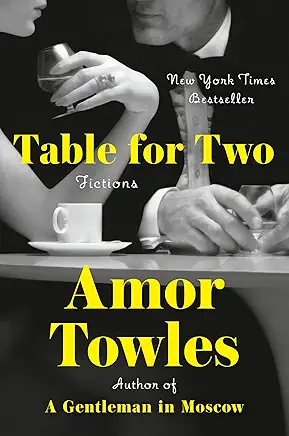 Amor Towles is a great writer. If you enjoyed his other books, A Gentleman in Moscow, Rules of Civility, or The Lincoln Highway, you must read this collection of six short stories and a novella. If you haven’t read any of his books, these stories might be an excellent place to begin. Towles has a fantastic ability to create characters that the reader will care about, and it is rare to do that well in short stories.
Amor Towles is a great writer. If you enjoyed his other books, A Gentleman in Moscow, Rules of Civility, or The Lincoln Highway, you must read this collection of six short stories and a novella. If you haven’t read any of his books, these stories might be an excellent place to begin. Towles has a fantastic ability to create characters that the reader will care about, and it is rare to do that well in short stories.
Two of the more memorable stories from this collection are “Hasta Luego” and “The Bootlegger.” In “Hasta Luega,” Towle introduces us to Smitty, a cheerful, personable man who makes kind gestures and retains his composure at the airport after his flight is canceled. Jerry, the storyteller, meets Smitty at the airport, is allured by his positive attitude, and goes to the same hotel while they await the rescheduling of their flights. Jerry enjoys Smitty’s amiable personality and his stories as they hang out in the hotel’s bar. When Smitty and Jerry’s phones get mixed up, Jerry discovers something about Smitty and his marriage and must make ethical decisions highlighting Jerry’s true nature and humanity.
In “The Bootlegger,” Tommy, the storyteller, notices Mr. Fein, sitting near him at a Carnegie Hall concert, is recording the concert. Of course, this is prohibited, and Tommy decides to report the recording and ensure that Mr. Fein is appropriately reprimanded. When Tommy finds out that Mr. Fein has been recording the concerts for his sick wife, he feels remorseful for not being a more sensitive human being. Tommy sets out to apologize to Mr. Fein, and some poignant events ensue. Again, Towels portrays many aspects of humanity and marriage through these relatable characters.
All the short stories take place in New York City, and places in New York, such as Central Park and Broadway, are prominent in some of them. In all of them, he delves into ethics, human nature, and relationships. Two people in each story sit at a metaphoric “table for two,” which gives the collection its name.
The novella, set in Los Angeles and Hollywood, is not as profound as the short stories but is fun and engaging. It takes place in 1938 and involves Olivia de Havilland before her Gone with the Wind role. It is an entertaining glimpse into movie studio happenings and movie stars’ concerns. Again, the one-on-one encounters between the characters lead to many “table for two” interactions that show human beings in situations where they make decisions that affect others as much as themselves.


